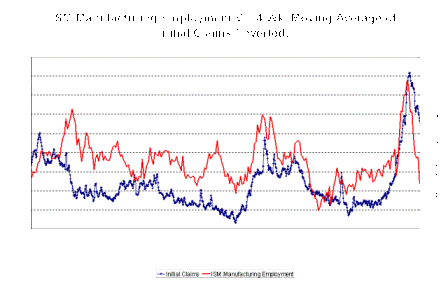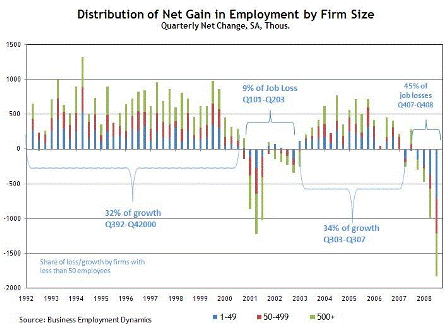*Not house view.
Since March I have been arguing that the world was a better place than people thought. I am now shifting my core view, which still might take several months to develop in the marketplace.
Skipping to the Conclusions
1. Deflation will be the surprise theme of 2010, when Congress will go into a pre-election deadlock; elections have only underscored this is the public direction
2. Excess Reserves will neither generate new lending nor generate inflation; actually, the quantity of reserves (M0) basically has no real economic effect
3. ZIRP and QE actually CONTRIBUTE to the deflation mostly by depriving the spending public of much-needed coupon income
4. When Federal Tax Rates increase in 2011 this problem will become even more severe
5. The overall level of public indebtedness (vs GDP) will not put upward pressure on yields in this backdrop and there will be a reckoning in the high-rates/deficit hawk community
6. Strong possibility that QE will actually be upsized next year rather than ended when the Fed observes these effects (and this might actually make things WORSE)
The Explanation (a Journey)
It seemed fairly intuitive and obvious for thousands of years that the Earth was at rest and the Sun moving around it. Likewise, it has seemed that the Fed controls the money supply, balances the economy by setting interest rates and fixing reserves which power bank lending, that more Fed money means less buying power per dollar (inflation), that the federal government needs to borrow this same money from The People in order to be able to spend, and that it needs to grow its way out of its debt burden or risks fiscal insolvency. I have, in just a fortnight, been COMPLETELY disabused of all these well-entrenched notions. Starting from the beginning, here is how I now think it works:
1. The first dollar is created when Treasury gives it to someone in exchange for something ammo, a bridge, labor. It is a coupon. In exchange for your bridge, here is something you or anyone you trade it with can give me back to cover your taxes. In the mean time, it goes from person A to person B, gets deposited in a bank, which then deposits it at the Fed, which then records the whole thing in a giant spreadsheet. Liability: One overnight reserve/demand deposit/tax coupon. Asset: IOU from Treasury general account. Tax day comes, Person A pulls his deposit, cashes in the coupon, the Treasury scraps it, and POOF, everything is back to even.
2. For various reasons (either a gold-standard relic or a conscious power restraint, depending who you ask), we make the Treasury cover its shortfall at the Fed and SWAP one type of tax-coupon (a deposit or reserve) for another by selling a Treasury note. Either the Fed (in the absence of enough reserves well get to this) or a Bank (to earn risk-free interest) or Person A (who sets a price for his need to save) is forced out his demand deposit dollar and into a treasury note at the auction clearing price. What about the fact that treasuries aren’t fungible like currency? On an overnight basis, that doesn’t really constrain anyones behavior. A reserve or a deposit means you get your money back the next day. Same thing with a treasury. Functionally its cash and wont influence your decision to buy a car. Likewise for the bank. In the overnight duration example, it does NOT affect their term lending decisions if they have more reserves and few overnight bills, or more bills and fewer reserves. Its even possible to imagine a world (W. J.Bryans dream) where the Fed, with its scorekeeping spreadsheet, combines the line-items we call treasuries and reserves.
3. Total public sector dissavings is equal to private sector savings (plus overseas holdings) as a matter of accounting identity. This really means that the only money available to buy treasuries came from government itself (here I am being a bit loose combining Tres+Fed), from its own tax coupons. If there arent enough ready coupons at settlement time for those Treasuries, the Fed MUST supply them by doing a repo (trading deposits/coupons for a treasury by purchasing one themselves at least temporarily). They dont really have a choice in the matter, however, because if the reserves in the banking system didnt cover it, overnight rates would go to the moon. So in setting interest rates they MUST do a recording on their spreadsheet and the Fedwire and shift around some reserve-coupons (usable as cash) for treasury-coupons (usable for savings but functionally identical).
4. Thus monetizing the deficit is actually just the Feds daily recordkeeping combined with its interest rate targetting, just keeping the score in balance. However, duration is real, as only overnight bills are usable as currency, and because people (and pensions!) need savings, they need to be able to pay taxes or trade tax-coupons for goods when they retire, and so there is a price for long-term money known as interest rates. The Fed CAN affect this by settings rates and by shifting between overnight reserves, longer-term treasuries, and cash in circulation. When the Fed does a term repo or a coupon sale, they shift around the banking and private sectors duration, trading overnight coupons for longer-term ones as needed to keep the balance in order.
5. But all this activity doesnt influence the real economy or even the amount of money out there. The amount of money out there dictates the recordkeeping that the Fed must do.
6. This is where QE comes in to play. In QE, aside from its usual recordkeeping activities, the Fed converts overnight reserves into treasuries, forcing the private sector out of its savings and into cash. This is just a large-scale version of the coupon-passes it needed to do all along. Again, they force people out of treasuries and into cash and reserves.
7. The private sector is net saving, by definition. It has saved everything the Treasury ever spent, in cash and in treasuries and in deposits. In fact, Treasuries outstanding plus cash in circulation plus reserves are just the tangible record of the cumulative deficit spending, also by IDENTITY.
8. So when QE is going on, there is some combination of savers getting fewer coupons which constrains their aggregate demand just like a lower social security check would, and banks being forced out of duration instruments and into cash reserves. I do not think this makes them lend more their lending decision was not a function of their cashflow but rather a function of their capital and the opportunities out there (even when you judge a banks asset/equity capital ratio, there is no duration in accounting, so a reserve asset and a treasury asset both cost the same). If they had the capital and the opportunities, they would keep lending and force the Fed to give them the cash (via coupon passes and repos, which we then wouldnt call QE but rather preventing overnight rates from going to infinity). As far as I can tell, excess reserves is a meaningless operational overhang that has no impact on the economy or prices. The Fed is actually powering rates (cost of money) not supply (amount of money) which is coming from everyone else in the economy (Tres spending and private loan demand).
9. Ill grant there is a psychological component to inflation phenomenon, as well as a preponderance of ignorance about what reserves are, and that might result in some type of inflationary event in another universe, but not in the one we are in where interest rates are low and taxes are going up and the demand for savings is therefore rising rather than falling.
10. One can now retell history through this better lens. Big surpluses in 97-01, then a big tax cut in 03. Big surpluses in 27-30, then a huge deficit in 40-41. Was an aging Japanese public shocked into its savings rate or is that savings just the record of the recessionary deficit spending that came after 97? It will be interesting to watch what happens there as the demographic story forces households to live moreso off JGB income will this force the BOJ to push rates higher or will they never get it and force the deflation deeper?
11. There are, as always mitigating factors. Unlike in the Japan example, a huge chunk of US fixed income is held abroad, so lower rates are depriving less exported coupon income which is actually a benefit. There is of course some benefit from lower private sector borrowing rates as well MEW, lower startup costs for new capital investment, etc. Also, even if one denies that higher debt/gdp ratios are what weakened it (rather than Chinas decisions again something unavailable to Japan), the dollar IS weaker now which is inflationary. But this is all more than offset, I think, by ppls expectation that higher taxes are coming, and thats hugely deflationary and curbs aggregate demand via multiple channels.
12. Additionally, there seems to be a finite amount of political capital that can be spent via the deficit, and that amount seems to be rapidly running out. See https://portal.gs.com/gs/portal/home/fdh/?st=1&d=8055164. The period of deficit stimulus is mostly behind us. Instead, people are depending upon ZIRP and the Fed to stimulate the economy, and in fact there is marginal, and possible negative, stimulation coming from that channel. The Fed is taking away the social security checks knowns as coupon interest.
13. Finally, there is a huge caveat that I cant get around, which is whether we are measuring inflation correctly. It happens that I don’t think we are strange effects like declining inventory will provide upward pressure and lagged-accounting for rents providing downward pressure in the CPI. This is an unfortunate, untradeable fact about the universe that I think will be offset by other indicators (Core PCE) sending a better signal. But this is part of the reason this whole story will take time to develop in the marketplace. As a massive importer of goods and exporter of debts we are not quite Japan, but the path of misunderstanding is remarkably similar.
* Credit due Warren Mosler and moslereconomics.com for guiding my logic.
J. J. Lando



